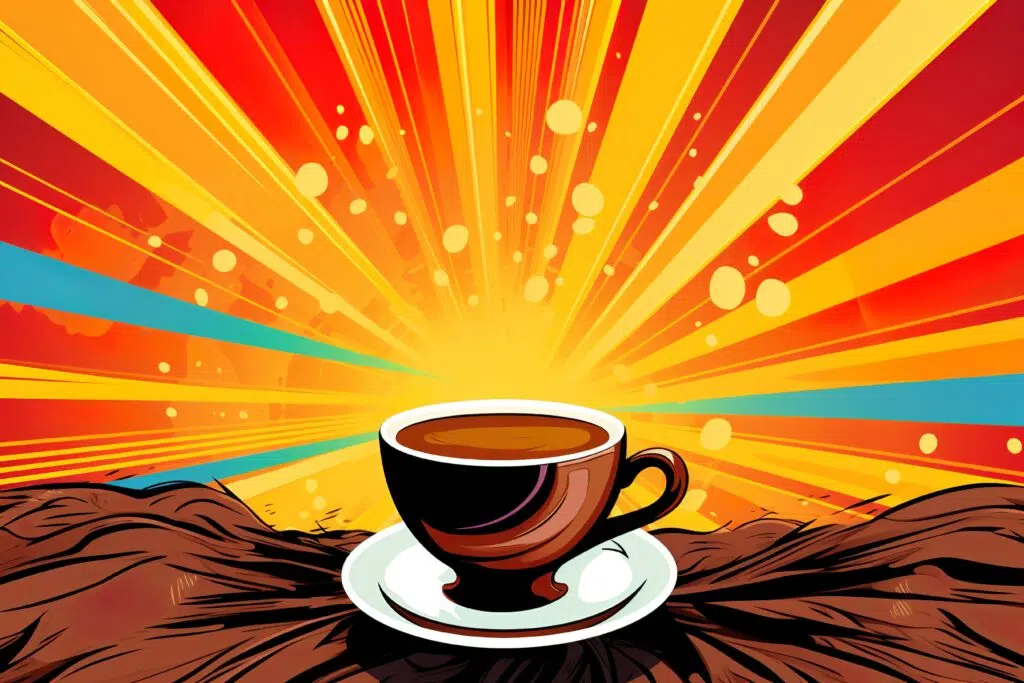Coffee Chat
Demystifying Caffeine Strength in Dark and Light Roasts
For coffee enthusiasts, the choice between a dark and light roast extends beyond mere flavour preferences, it also influences the caffeine strength in your coffee cup.
The common assumption that dark roasts are more potent in caffeine might surprise many, as the relationship between caffeine content and roast level is more nuanced than it seems. Let’s explore the intricate connection between caffeine strength and the roast profile, shedding light on the fascinating world of dark and light roast coffees.
Understanding the Roasting Process
Before delving into caffeine content, it’s crucial to grasp the basics of the roasting process. Coffee beans start as green, raw seeds. During roasting, they undergo chemical transformations that give them their characteristic flavour, aroma, and color. The longer the roasting process, the darker the beans become. Most of our blends are roasted using a medium roast which is deliberate to maintain the flavours and the caffeine content of the beans.
The Myth of Dark Roasts Having More Caffeine
The relationship between roast level and caffeine strength is not straightforward, though. While it’s true that coffee beans lose mass as they roast, leading to a decrease in volume, the actual caffeine concentration remains relatively stable so the darker appearance of a bean doesn’t necessarily always correlate with a higher caffeine content.
The key factor influencing caffeine strength is actually bean density. As beans roast, they expand, becoming less dense. Light roasts, which undergo less expansion, tend to be denser than their darker counterparts. In practical terms, this means that a scoop of dark roast coffee might appear larger than an equal scoop of light roast, but the latter can contain more caffeine due to its higher density.
Measuring Caffeine Strength: By Weight or Volume?
To add another layer of complexity, measuring caffeine by volume (scoops) rather than weight can also lead to misconceptions. If you’re using a scoop to measure your coffee, the darker, less dense beans might appear to provide more caffeine simply because there’s more volume per scoop. However, when considering the weight, the caffeine concentration in light roasts can be higher. A study conducted by Which in 2023 demonstrated that the level of caffeine in high street roast was considerably varied depending on where you drank your coffee.
Dark roasts, with their shiny surface, often suggest a higher oil content. These oils contribute to the bold flavours and smooth textures associated with dark roasts. However, the oils contain no caffeine, so the flavour and caffeine content are not directly linked. Additionally, dark roasts often have a lower water content due to longer roasting times, potentially impacting the extraction process and perceived strength.
Personal Caffeine Strength Preference and Brewing Methods
Caffeine strength also depends on individual preferences and brewing methods. If you enjoy a robust cup, you might opt for a dark roast and use methods like French press or espresso that extract more compounds, including caffeine. On the other hand, if you savour the nuanced flavours of a light roast, methods like pour-over or drip brewing might be your go-to.
In the end, the choice between dark and light roast comes down to personal preference. Whether you’re drawn to the deep, smoky notes of a dark roast or the bright, fruity nuances of a light roast, understanding the caffeine dynamics adds a layer of appreciation to your daily coffee ritual. So, savor each cup, explore the spectrum of strengths, and enjoy the rich tapestry of flavors that coffee has to offer.

